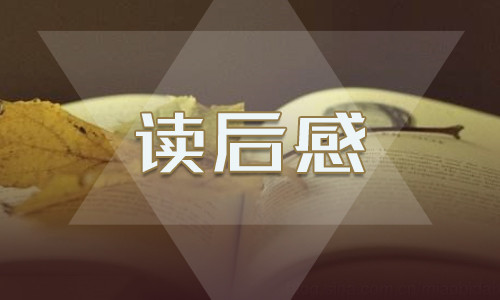Fighting Bogus Reports
By YIN PUMIN
【期刊名称】北京周报(英文版) 【年(卷),期】2011(054)034 【总页数】2
Anti-misinformation groups emerge to patrol the micro-blogosphere As people across China mourned the tragic loss of life in the high-speed train crash on July 23 near Wenzhou,Zhejiang Province, Internet forums were awash with comments, expressing sadness and anger at the accident.
But
as
millions
of
messages
were
posted
and
reposted,ordinary Internet users began to struggle to discern which pieces of information were accurate and which were misleading.
A netizen self-proclaimed Guo Yao posted a piece of information on Sina Weibo,a twitter-like micro-blog service, on July 29, claiming her 100-day-old baby, Wang Yixuan, died in the accident but was not on the list of victims.
Micro-blog users including Wu Danhong, an associate professor at the China University of Political Science and Law,examined the pictures Guo had posted, and found they weren’t authentic. It has been confirmed the blogger didn’t actually lose her baby in the Wenzhou accident. In this digital age, misleading information spreads at extraordinary speed over the Internet. Micro-blogging platforms in particular, allow
information and disinformation to be disseminated at an
unprecedented pace.
“Facing the challenge of disinformation, Internet users, the government and site operators are wondering how to manage the micro-blogosphere,” said Dou Hanzhang, a Beijing-based researcher who helped form an anti-misinformation group on Sina Weibo earlier this year.
A rising power
By June this year, the number of microblog users in China stood at 195 million,accounting for 40 percent of all Internet users in the country. An annual report on China’s Internet users’ opinions, released by the Communication University of China in March, said the microblog had become the public’s third most-used source of information.
“China has become much more open and much more transparent. People have a lot of freedom to express themselves and micro-blogging can bring that freedom to the next level,” said Charles Chao, CEO of Sina.com. His company is a leading news portal in China and runs Sina Weibo.
Unlike traditional media channels,micro-blogs allow anyone with an Internet connection to effectively publish whatever they want online. Users can share words,photos and videos with other users and news spreads through the network at lightening speed.
While a micro-blog’s ability to distribute information makes it a useful tool for those following news, the ease of uploading information onto the site also makes it ripe for rumor-mongering.
“Micro-blog misinformation is common and hard to trace. It’s been argued micro-blogs are self-managing, and false misinformation will naturally disappear. But this is a very slow process and not an inevitable or reliable one. Hysterical misinformation often do real damage,” said Wu at the China University of Political Science and Law.
As China’s most popular micro-blog site, Sina Weibo claims it has 50 million registered users, including a large number of celebrities and prominent scholars. These users reportedly write more than 25 million postings a day.
In order to address the misinformation problem, Sina Weibo established a specialized team last November to monitor the accuracy of the information posted by its users.
“With the ever increasing number of micro-blog users and the explosion of available information, it’s dif fi cult for Web users to distinguish postings that are correct from those that are not, so the company decided to set up a group to check postings,” said team leader Tan Chao.
The misinformation-checking team consists of seven members. Many in the group are experienced investigators. “Some are former journalists,
some have good foreign language skills, and others have good research skills,” said Tan, who is tasked with moderating Sina Weibo’s avalanche of postings every day.
The team tends to monitor micro-blog postings that make outlandish claims. Tan insists, however, his team is not in charge of censoring postings but rather acts like a moderator, only deleting postings that are proven to be false. Sina Weibo’s policy is to thoroughly investigate suspect micro-blog postings before taking any action.
“We monitor questionable postings that get a lot of reposts over a short period of time,” Tan said.
The team uses a three-step process to track suspect postings. Team members look at how frequently a posting is reposted,then they contact the user who first posted the posting, and fi nally team members do a thorough fact-check to ascertain whether the posting is false.
“We don’t refute a piece of misinformation until we are 100-percent sure it’s wrong and have the evidence to support our judgment,” Tan said. When they encounter controversial topics, the team is obliged to seek the advice of their editor in chief.
Misinformation publishers would be punished, Tan said. The team will deletefalse postings and even close down the accounts of users caught publishing misinformation.
On June 8, three postings on Sina Weibo said a student in Shaoyang
County in central China’s Hunan Province committed suicide on the first day of the national college entrance exam.
The postings said Lu Pin, an 18-year-old student in the No.1 High School in Longhui Township, had arrived 15 minutes late for the exam on June 7 and jumped to his death from the window of his sixth- fl oor dormitory after an exam supervisor prevented him from entering the venue.
After reading the postings and looking at other reports, Tan’s team confirmed the news was a piece of false information. Team members discovered the local police received calls alerting them of a suicide at 8:57 a.m., three minutes before the exam began.It’s clear late arrival could not have been the reason for the suicide.
As a punishment, the investigative team closed the three users’ accounts for one month.
Sina Weibo’s team’s account now has more than 300,000 followers and the team encourages netizens to send in any questionable postings they encounter.
The diligence of the team’s fact checking means it only refutes one or two postings every couple of days, Tan said. The Beijing Morning Post said the team had dispelled 129 pieces of misinformation since it was established.
“Misinformation is easily made, but disproving it can be tough,” Tan





